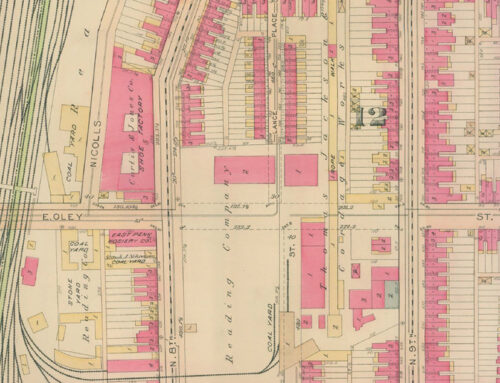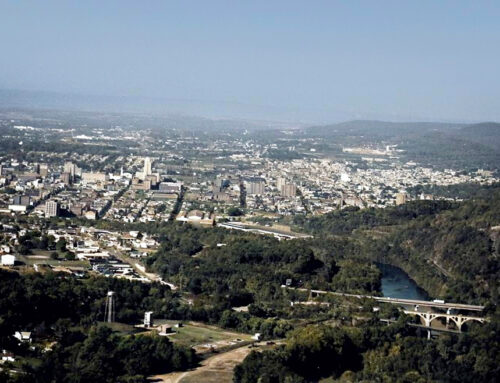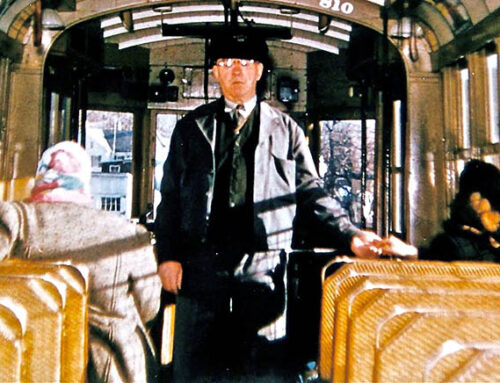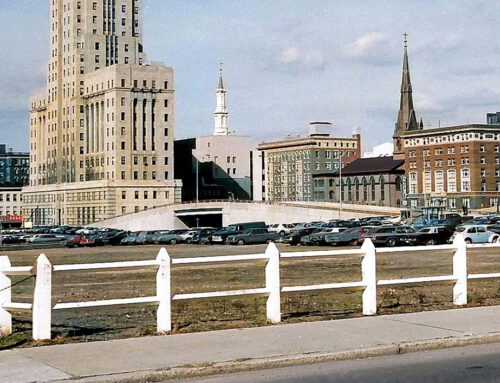In 1886, the Philadelphia & Reading Railroad (P&R) decided to provide a safe pedestrian route across its main line and yard tracks east of the Outer Station in Reading. With the closest underpass located two blocks north of the station, pedestrians coming from the east likely risked walking directly across the tracks instead of making the detour. Clearly, a bridge was needed at the station itself, without intermediate piers or columns that would hamper future rearrangement of tracks. A suspension bridge would have been an attractive choice for the light pedestrian loading, because a long truss would have consumed a great amount of material just to support its own weight.
Below: Image Gallery – Philadelphia & Reading Railroad Swinging Bridge – Touch or Click Images to Enlarge.
It is not known whether the P&R first solicited bids from other firms, but it eventually contracted with the Jolin A. Roebling’s Sons Company of Trenton, New Jersey. Roebling engineer William (or Wilhelm) Hildenbrand designed the structure in October 1886, and it was completed the following year. Hildenbrand is associated with John Roebling’s best-known suspension bridges, serving as a draftsman on the Brooklyn Bridge, and engineering an 1898 retrofit of the Covington-Cincinnati Bridge over the Ohio River. Undoubtedly he designed many smaller spans built by the Roebling Company.
On August 4, 1887, several hundred members of the St. John’s Church walked across the bridge making it sway to a point were it was impossible to walk. Hence the nickname “Swinging Bridge.”
Few short-span suspension bridges survive in Pennsylvania, however. Reading’s suspension bridge is no exception. The Reading Company, successor to the P&R, closed the span in 1964 and removed the approaches in 1967. The local chapter of the American Society of Civil Engineers (ASCE) completed a study for its preservation in May 1983, proposing that the bridge be disassembled and re-erected elsewhere. But on 7 October of that year, Conrail, which had since acquired the Reading Company, unexpectedly hired the Empire Wrecking Company of Reading to raze it. Conrail cited safety reasons for what local papers called a “surprise demolition.”
In response to public outcry, Empire Wrecking agreed to donate the parts to Berks County.’ One tower of the bridge was subsequently rebuilt in Heritage Park on Canal Street along the Schuylkill River, and designated a state civil engineering landmark. The black tower is all that remains of the famed swinging bridge that once ferried passengers over the bustling rail yard at Reading’s Outer Station.
Below: Black Tower at Heritage Park on Canal Street along the Schuylkill River.









Leave A Comment